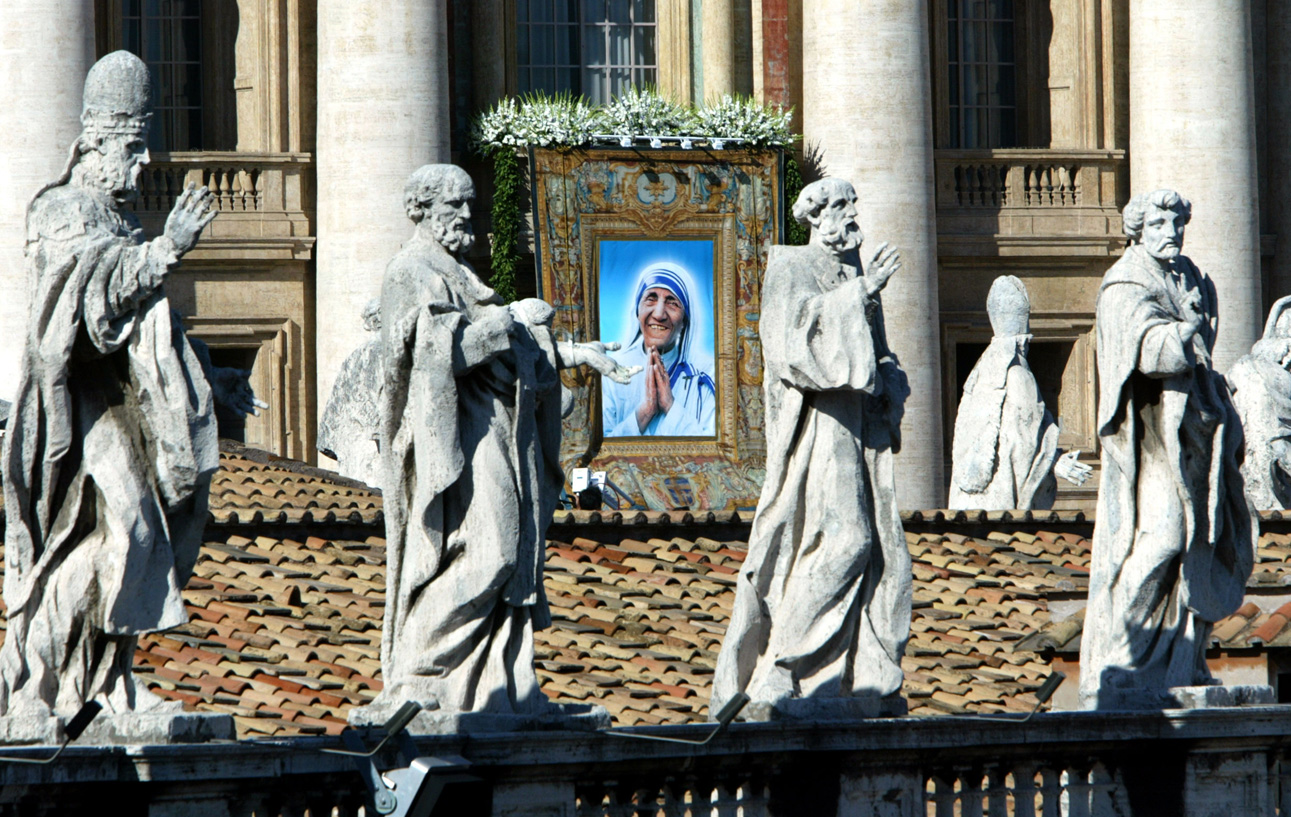From September 04, Mother Teresa, saint of the gutters, will be officially known as 'saint' Teresa. In a ceremony to be held at the Vatican, Pope Francis will officially canonise Mother Teresa. The canonisation of this petite woman with immense power of love fittingly falls during the Jubilee Year of Mercy declared by the Catholic Church.
The Albania-born nun, Agnes Gonxha Bojaxhiu, touched millions of downtrodden lives in India and abroad.
Canonisation is the process of admitting a deceased person into the canon of saints; the official process of declaring a person a saint. Had Mother Teresa lived in the earlier centuries, she could have been declared a saint at her funeral. That's the way things worked then, not any more though. Till 1234, the Church did not have a formal process for canonisation. Usually martyrs and those recognised as holy were declared saints by the Church at the time of their deaths. Now, however, the Church follows a complex process.
1. When a person is considered for sainthood, a bishop is entrusted with initial investigation of the person's life. The bishop examines the person's life and work for heroic virtue and the information gathered is sent to the Vatican. Canonisation is a measure of the sanctity of the person's life and also continuity of the faith of people even after the person's death. When a person is officially considered for sainthood, they are given the title 'Servant of God'. A church official, the postulator, coordinates the process and serves as an advocate. It is up to him to prove that the candidate was a person of heroic virtues. In Mother Teresa's case, the task was entrusted with Rev. Brian Kolodiejchuk, a Canadian priest and member of the Missionaries of Charity Fathers, a religious order founded by Mother Teresa.
2. The Congregation of the Cause of Saints, a group of cardinals and theologians, now examines the person's life and studies the evidence provided in the form of documents and testimonies. If the candidate is approved, he/she receives the title 'venerable'.
3. The next step towards sainthood is beatification, that is, the person is declared 'blessed'. Once beatified, the person can be worshipped or honoured in a particular region or by a particular group. Mother Teresa was beatified on October 19, 2003. In order for a person to be beatified, it should be proven that he/she is responsible for a posthumous miracle—a Bengali woman Monic Besra was cured of stomach tumor. It is believed she was cured by a locket with Mother Teresa's photo on it. The miracles have to be confirmed by medical practitioners also.
It normally takes decades for the Vatican to complete the exhaustive inquiries necessary to confirm purported miracles of potential saints. But, as a sign of his admiration for Mother Teresa and her work, Pope John Paul II had waived the customary five-year waiting period (after the candidate's death) to begin the procedures which can lead to sainthood. With sainthood coming her way just 19 years after her death, Mother Teresa was literally on the 'fastrack' mode.
4. After beatification, the church has to identify one more miracle for the person to be officially declared a saint. Pope Francis recognised the second miracle attributed to Mother Teresa last year. She supposedly healed a Brazilian man Marcilio with several brain tumors in 2008. His wife had started praying to Mother Teresa and had asked her family members to do the same.
By acknowledging this miracle, the Vatican also waived a 1917 rule that a minimum of 50 years should pass between beatification and sainthood. With canonisation, the Church officially declares that the deceased person is in heaven, and that they can be honoured throughout churches in the world. A day in the liturgical calendar is dedicated to the saint, which is celebrated and honoured as the feast of the saint.
Mother Teresa is etched into the soul of India for her work among the slum-dwellers of Kolkata. To her followers and admirers of her cause, this Albania-born nun is no less Indian, making her canonisation all the more special for India, home to three other saints—Alphonsa, Kuriakose Elias Chavara and Euphrasia. Saints Alphonsa and Euphrasia were nuns who were canonised in 2008 and 2014 respectively. Kuriakose Elias Chavara, who was canonised in 2014, was a priest and a social reformer. Interestingly, all three of them hailed from Kerala.







